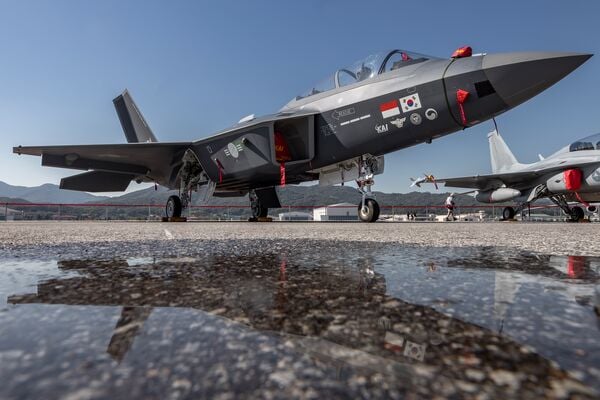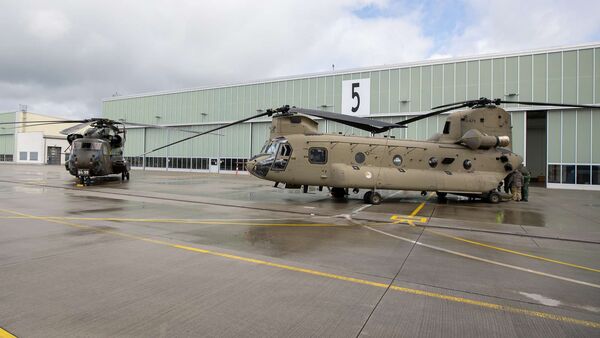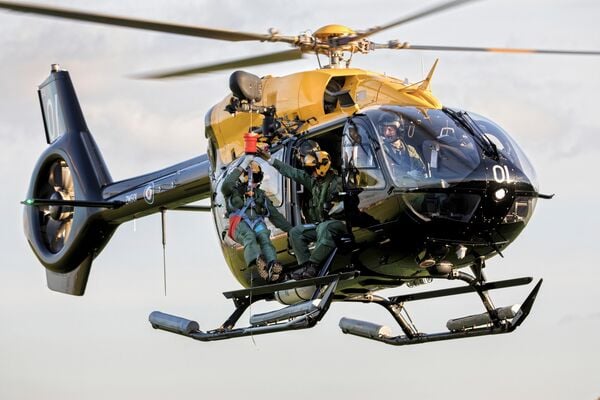- About
- Intara
- Capabilities
- Advisory
- Resources
- News
- Store
Wings over Mandalay: Myanmar's junta deploy Chinese-made CH-3A tactical UAVs to observe protest movements
08 April 2021
by Kelvin Wong
Kelvin Wong, unmanned systems editor has confirmed the use of the Chinese-made CH-3A tactical UAV in Myanmar. The latest open-source intelligence from Janes follows.
Key points
- Myanmar’s military junta has begun to use its unmanned aerial vehicles to support its operations against protest movements.
- A rare sighting of the Chinese-made CH-3A tactical UAV over Mandalay has enabled Janes to confirm that it is in operational use in Myanmar following years of speculation.
Popular unrest in central Myanmar has been steadily increasing in the two months since the military, known as the Tatmadaw, seized power from the National League for Democracy (NLD)-led government in a 1 February coup. The unconstitutional removal of the government has prompted daily street protests and other forms of civil disobedience that have led to armed clashes with security forces, resulting in over 550 reported civilian deaths to date.
Images circulated on social media in March suggest that the Tatmadaw has begun to employ its unmanned aerial vehicle (UAV) assets to monitor protest activities in central Myanmar, with at least two types of UAVs documented flying at altitudes low enough to be “seen and heard” by residents in the city of Mandalay.
Among these images is a CH-3A (Cai Hong-3A, or Rainbow-3A) tactical UAV seen orbiting over urban centres in late March. The sighting of the air vehicle, which is developed by Chinese state-owned defence prime China Aerospace Science and Technology Corporation (CASC), is especially noteworthy given the secrecy in how the Tatmadaw has operated it.
For instance, the first and only documented sighting of the CH-3A UAV in Myanmar was provided by uncredited image widely circulated on the internet from mid-2016, which showed the distinctive air vehicle – which adopts a uniquecanard and swept-wing configuration with a pusher propeller, a belly mounted gimballed electro-optical/infrared (EO/IR) sensor payload, and a tricycle undercarriage – with serial number “04” stencilled on its starboard vertical fin apparently being readied for take-off on a paved runway at an undisclosed location.
The dense vegetation seen close to the edge of the runway indicates it could be part of a small provincial airfield in the northern or south-eastern areas of operation as opposed to a well-equipped military airbase in a major city.
It is believed that between 10 and 12 CH-3A UAVs – about a squadron’s worth of aircraft – were delivered to Myanmar around the 2013-2015 timeframe and operated by the Myanmar Air Force (Tatmadaw Lay), with the air vehicles reportedly based at Meiktila Air Base in north-central Myanmar. These were understood to be used primarily as intelligence, surveillance, and reconnaissance (ISR) assets to support longstanding counterinsurgency (COIN) operations against ethnic rebel groups across the country, although there have been reports that some of these air vehicles had also been used to strike rebel infrastructure on several occasions.
Finding the Rainbow
Using Mandalay city as a reference in the search for the elusive UAVs, Janes investigated major military aerospace facilities within a 200 km radius – the maximum claimed line-of-sight control range of the CH-3A – using commercially available satellite imagery and observed the presence of at least two operational UAVs outside a large hangar in the south-western section of Shante Air Base in Meiktila city, a flight distance of about 122 km away from Mandalay and well within the ability of the CH-3A to be deployed there to perform aerial surveillance.
This sighting also represents the first documented instance of the UAV type operating from a key Tatmadaw Lay airbase. It is also worth noting that the air vehicles were seen when the satellite passed overhead on 31 January, a day before the Tatmadaw launched its coup.
It is not known if the two air vehicles observed in the image are permanently based at Shante Air Base, or if these had been moved there – from where they had been previously documented in the northern states – in anticipation of the coup. A typical CH-3A package can comprise between two and three UAVs, a truck-based mobile ground control station (GCS), and a truck-based support module, meaning it can be readily redeployed as required to suit operational requirements or to conceal their whereabouts.
CH-3A capabilities
According to company specifications, the CH-3A UAV has a maximum take-off weight (MTOW) of 650 kg with a wingspan of 8 m and a payload capacity of 180 kg. The type is powered by a rear-mounted piston engine driving a three-bladed pusher propeller that enables it to achieve cruise and maximum speeds of 180-220 km/h and 260 km/h respectively, with an operating endurance of up to 12 hours depending on its configuration. It can operate up to a service ceiling of 19,685 ft, although its optimal operating altitudes are in the 9,842–16,404 ft range.
The primary mission payload is its ventral EO/IR sensor turret which offers all-weather day/night observation capabilities with high-definition daylight colour and thermal imaging channels, as well as potentially a laser rangefinder and target designator depending on the mission requirements.
This article is an extract - Janes subscribers can read the full piece here.
Got a question? Get in touch.

South Korea announces new aircraft engine factory
19 April 2024
by Akhil Kadidal


A new engine factory being developed by Hanwha Aerospace at Changwon will produce engines for the KAI KF-21 and the TA-50 multirole trainer aircraft. (Zhang Hui/VCG via Getty Images)
Hanwha Aerospace is building a new factory to produce engines for combat aircraft, including the Korea Aerospace Industries (KAI) KF-21 Boramae 4.5-generation aircraft. The new factory is also expected to support the development of South Korea's new domestic fighter engine programme.
Ground was broken for the 16,530m 2 engine production facility at Changwon on 15 April 2024, the South Korean Ministry of National Defense (MND) said on 17 April. The factory is being developed at a cost of USD30 million and is scheduled to be operational by 2025. The MND added that the factory's priority is the licence production of the 92.1 kN (20,700 lb st) General Electric F414-GE-400 engine for the KF-21.
A Hanwha Aerospace spokesperson told Janes on 19 April that “100%” of the licence manufacture of the F414 engine will be achieved at this factory. “The facility is expected to produce approximately 300 engines annually [after becoming operational], the spokesperson added.
RNLAF helps Luftwaffe prepare Chinook capability
19 April 2024
by Gareth Jennings


A Dutch Chinook (foreground) arrived at Holzdorf Air Base in mid-April to help the Luftwaffe prepare for the arrival of its own Chinooks into the station from 2027. In the background is a Luftwaffe CH-53G currently based at the location. (Bundeswehr)
The Royal Netherlands Air Force (RNLAF) is helping the Luftwaffe prepare for its upcoming Chinook heavy-lift helicopter capability, dispatching one of its own helicopters to the type's future operating station in mid-April.
The Bundeswehr said on 18 April that an RNLAF CH-47F Block 1 Chinook landed for the first time at Holzdorf Air Base (also known as Schönewalde), south of Berlin, to help the Luftwaffe prepare for the arrival of the first of its CH-47F Block II Chinook Standard Range (SR) air-to-air refuelling (AAR)-capable heavy-lift helicopters from 2027 to 2032.
“With the future stationing of the CH-47, Holzdorf Air Base will become a hub for helicopter transport. The [Luftwaffe] is gaining initial experience with the Chinook transport helicopter with its Dutch allies – in flight operations, refuelling, and training,” the Bundeswehr said.
UK contracts H145 helicopters for Brunei, Cyprus missions
19 April 2024
by Gareth Jennings


With the UK already flying the H145 with the UKMFTS training programme, it has acquired additional rotorcraft to take on its Brunei and Cyprus support missions. (Crown Copyright)
The United Kingdom has contracted Airbus to deliver six new Airbus Helicopters H145 rotorcraft to be used in Brunei and Cyprus.
Announced by the Defence, Equipment, and Support (DE&S) branch of the Ministry of Defence (MoD) on 18 April, the GBP122 million (USD152 million) award will see the helicopters acquired to replace the Airbus Puma HC2s (Helicopter Cargo 2) that are supporting the British Army's training mission in Brunei following the recent retirement of the Bell 212s, as well as the Pumas HC2s that performing search-and-rescue (SAR) and support duties at Royal Air Force (RAF) Akrotiri in Cyprus following the recent retirement of the Bell 412s.
Known as Jupiter HC2 in UK military service, the D3-standard five-bladed helicopters are to be delivered later in 2024. The MoD already operates the D2-standard four-bladed H145 in the trainer configuration, with seven Jupiter HT1 (Helicopter Training 1) aircraft in use with the UK Military Flying Training System.
Kelvin Wong, unmanned systems editor has confirmed the use of the Chinese-made CH-3A tactical UAV in...
Latest Podcasts
Iran Israel analysis
In this podcast Janes analysts discuss the Iranian attacks on Israel on the 14 April. They highlight the military systems used by Iran and the performance and impact of these on Israel. They also discuss the implications of this attack goi...
Listen nowJanes Case Studies
Using Janes Intara to build a common intelligence picture: Russian build up on the Ukrainian border
View Case StudyNews Categories
 Security Details
Security Details